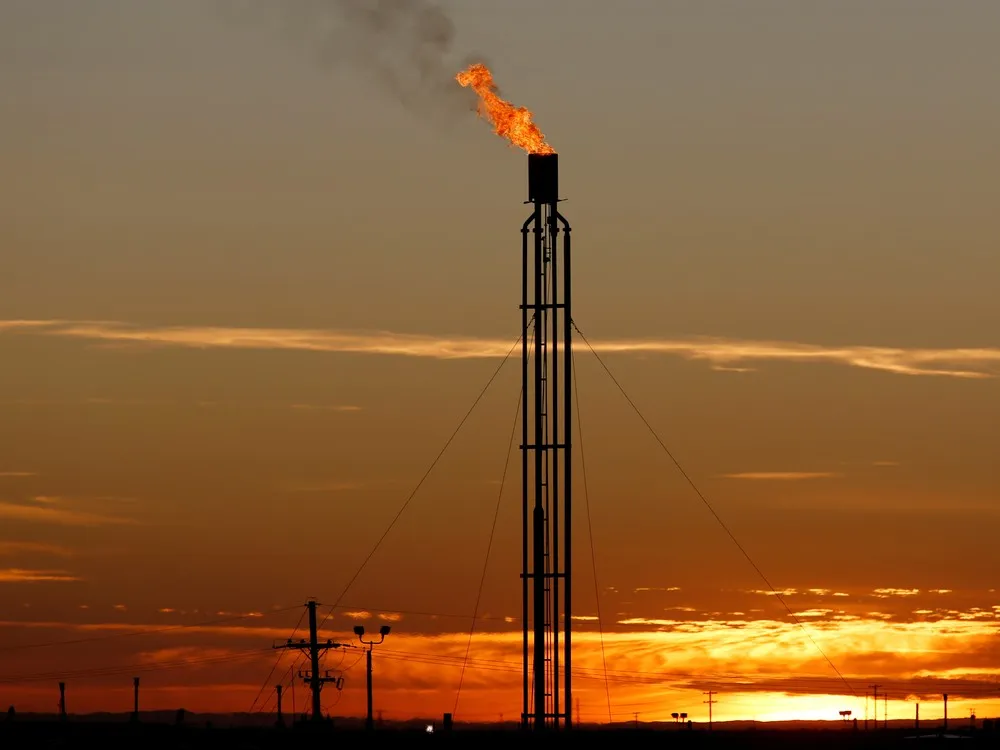

Oil and gas companies in Nigeria have flared gas worth $485.3 million in the first six months of 2023, a development hinged largely on improved crude oil production.
Data gleaned from the Nigeria Gas Flare Tracker (GFT), a satellite-based technology, shows that Nigeria’s gas flares rose by 9.97 percent from $441.3 million in the same period of 2022 to $485 million this year.
Nigeria flared 138.7 billion standard cubic feet (scf) of gas from January to June, according to the GFT.
Gas flaring is the burning of natural gas associated with oil extraction. It occurs due to various issues, from market and economic constraints to a lack of appropriate regulation and political will.
Because they are unwilling to make the investments required to harness the gas found in wells, oil companies burn it when producing oil.
The procedure pollutes the environment, and the government imposes fines, but they are less expensive than the investments required to harness the gas.
The Federal Government established the Nigerian Gas Flare Commercialisation Programme (NGFCP) in 2016, with the goal of selling over 700 million scf of gas per day flared at 178 different locations.
After reviewing statements of qualification submitted by interested companies, the former regulator, the Department of Petroleum Resources (DPR), announced in February 2020 that it had shortlisted 200 investors to bid for gas flare sites.
However, the program was later halted. It was stated in June 2020 that the COVID-19 pandemic had caused a delay in the program because bidders required access to the flare points.

Following former President Muhammadu Buhari’s signing of the Petroleum Industry Act (PIA) in August 2021, the DPR was divided into two entities: the Nigerian Upstream Petroleum Regulatory Commission (NUPRC) and the Nigerian Midstream and Downstream Petroleum Regulatory Authority.
The NUPRC relaunched the NGFCP in October 2022, in order to reduce gas flaring and increase its deployment for economic use.
“The relaunch followed a submission by the NUPRC programme management team set up to coordinate the implementation of the NGFCP,” said Gbenga Komolafe, CEO of the Commission.
According to him, the formal network of the programme was to realign it with the objectives of the PIA and refocus the NGFCP to reflect current flare disposition, operational realities, as well as prevailing market, environment, and global dynamics.
Meanwhile, Etulan Adu, an oil and gas production engineer, said Nigeria does not do much about flare reduction because of the economics of building facilities that can capture such gas.
“The increase in penalties for flaring gas will influence the commercialisation of gas but it will place the international oil companies (IOCs) at tight end and some could divest such marginal assets if the economics does not favour long-term operations anymore,” he said.
On the other hand, Nigeria has recorded a significant improvement in its crude production in the same period. According to the NUPRC, the country’s production averaged 1.45 million barrels per day. This includes crude oil, blended and unblended condensates.
Earlier, it was reported that rising oil production from last month helped shore up the overall output from the Petroleum Exporting Countries (OPEC) providing a cushion for the Organization amidst cutbacks from other producers.
This was primarily on the back of Nigeria and Iraq mitigating the impact of production cutbacks implemented by other countries.
Haitham al Ghais, OPEC Secretary General during his address at the Energy Asia conference in Kuala Lumpur, Malaysia on June 26, said, “OPEC sees global energy demand increasing by 23 percent through 2045, and he sees no credible way to address this without utilising all available energy sources, and with energy market stability as a guiding light.
“OPEC projects global oil demand rising to 110 million barrels a day by 2045, and oil still makes up about 29 percent of the energy mix by then. He said between now and 2045, oil investments will require up to $12.1 trillion, or over $500 billion each year.” He said.
He further added that “oil producers recognize the need to continually reduce emissions and decarbonize, as well as invest in global best practices and cutting-edge, best-in-class technologies like carbon capture utilisation and storage, clean hydrogen technologies, and the circular carbon economy.”
SOURCE:https://businessday.ng/
